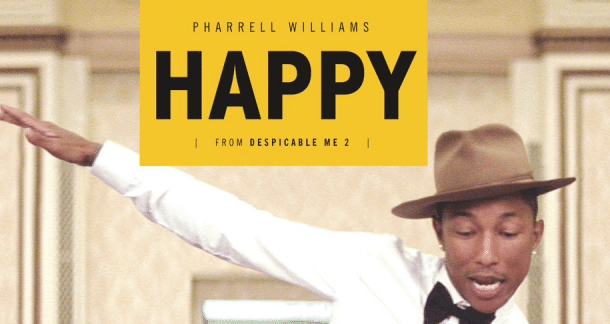
Pharrel’s “Happy” Song to Teach Musical Form
I love Pharrel’s “Happy” song and I know that my kids do too! This summer I was brainstorming a way to use the Happy song in my classroom and it struck me that I could so easily use this fantastic song to teach form to my students. I developed the lesson and tried it out with my kiddos (and they loved it!). Since then I’ve shared it with the other music teachers in my district and shared the lesson at my local Orff Chapter (Heart of America Orff Chapter!) at one of our free share sessions.
Sidebar moment: If you don’t already belong to a nearby Orff chapter or participate in their workshops then you need to get on it ASAP! You’ll find so many great ideas and great ways to share and make some amazing friends and colleagues! And don’t forget that Kodaly has local chapters as well. Get involved, make friends, find ideas, get support! Want to find your American Orff-Schulwerk Association (AOSA) Chapter? Click this link to find one near you!
Teaching Form through Listening Examples
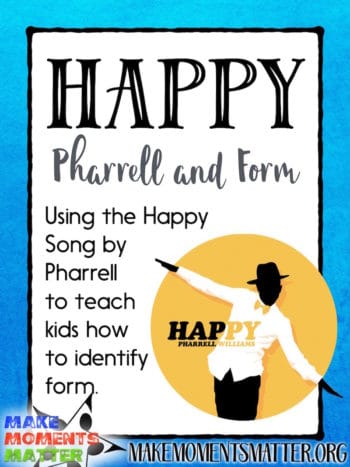 When I first started in the classroom, I wasn’t sure how to teach kids to listen critically to music. I remember those TERRIBLE lessons where I would put on music and expect kids to just sit and listen. I know now that kids are not wired to just sit and listen quietly to even the most engaging of songs. I’ve learned a lot since those first few lessons and I definitely feel more successful and understand the different strategies I can use to help kids learn to listen for specific things.
When I first started in the classroom, I wasn’t sure how to teach kids to listen critically to music. I remember those TERRIBLE lessons where I would put on music and expect kids to just sit and listen. I know now that kids are not wired to just sit and listen quietly to even the most engaging of songs. I’ve learned a lot since those first few lessons and I definitely feel more successful and understand the different strategies I can use to help kids learn to listen for specific things.
I find that often when we start to teach kids to listen for form and pattern in musical examples we start with classical music examples. While we might instinctually fall back on classical music, sometimes it’s hard for little ears to really distinguish when we’ve moved from one section to another. Things in classical music can be really subjective and hard to understand and I think that so many of us can relate and remember those lessons in college where WE couldn’t really distinguish changes (Were we really at the recapitulation? What signals the change in the development? Did we really transition into that last movement?).
When I first started teaching, my district curriculum suggested that we use “The Aquarium” from the Carnival of Animals to teach AB form to Kindergarten. First of all, I’m not even sure that that song is an AB form and second, I know that form identification with that song is impossible for my kindergarteners! It’s just too hard to parse out for those little people because there are not clear delineations between sections. Even when we met as a district music teacher PLC and looked at the song, we all had different ideas of the form and when sections changed… not a great example of AB. There had to be something better! Of course I still use classical examples all the time in my classroom. My Kindergarten kids just used Elgar’s Faeries and Giants for this purpose (this is something I blogged about last year– Read about that HERE).
Sometimes you need to mix up your music listening examples. We’re not doing our kids justice if we only stick to classical. We need to engage students with music that is culturally relevant and prepares them for a lifetime of music-making. I want to instill in my students a love for music and I want them to leave our school system feeling like they are empowered to join in the music-making process for the rest of their life. Yes, it would be great to have a student go on to get a music scholarship to college, I hope that some do! But, I would be just as happy if a student came to me in 20 years and told me that they are part of their local church choir or play in a little band with their friends on Friday nights. With that in mind, I want to engage kiddos with music that is compelling and ensnares their curiosity while still teaching them solid content. The great thing about using the example of Pharrel’s Happy song is that the students already have a prior knowledge, they’ve got buy-in because they enjoy the song. What’s even better is that the transitions between sections are just ridiculously clear and the lyrics are super upbeat and encouraging to boot! It’s an amazing song!!
Finding Form in “Happy” – Use Movement!
So I sat down and looked at the Happy Song critically to figure out the form and how I would teach it. The form is pretty easy to distinguish with solid and clear transitions: there is a verse (A), obvious chorus (B), and bridge (C) with nearly no introduction to begin or coda at the end. The sections created this form: A B A’ B C B B C B B. This song is a great example to use because whenever you come back the A section or hear the B section again it is just so overwhelmingly obvious that you have returned to something you already know. Kids can easily distinguish that they have heard that music before and they can identify it with very few problems. It doesn’t hurt that there are only three choices–A, B, C–and that those choices repeat in a semi-expected way.
It became clear that I would need to use some movement to help us work with this song. It’s such a peppy song and students naturally start to move whenever they hear it. Why try and suppress that? Why not harness that energy and excitement and use it to add more clearly defined sections for the song?
The Process: Critical Thinking Ahead!
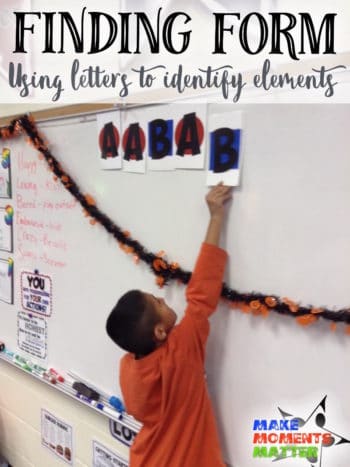 We work through this together as a class. My favorite part is to say that “we’re going to identify form with a song that you might know.” We talk about song elements for a tiny tiny second and I ask “What almost always comes at the beginning of the song where music happens but nobody sings?” The introduction! I tell them to listen for the introduction and then to raise their hand when they KNOW that the introduction is over (i.e. when they singer starts singing). This song has a five-beat introduction that is so recognizable! They are all smiles when they hear it and their hands shoot up when Pharrel starts to sing. I ask if it’s a long introduction or a short one and they identify that it’s super short! We move on but continue with the “listen to this song and move and when you hear a new section start/when you hear the music change, stop moving and raise your hand” procedure. This slows us down a bit, but really helps with the critical thinking.
We work through this together as a class. My favorite part is to say that “we’re going to identify form with a song that you might know.” We talk about song elements for a tiny tiny second and I ask “What almost always comes at the beginning of the song where music happens but nobody sings?” The introduction! I tell them to listen for the introduction and then to raise their hand when they KNOW that the introduction is over (i.e. when they singer starts singing). This song has a five-beat introduction that is so recognizable! They are all smiles when they hear it and their hands shoot up when Pharrel starts to sing. I ask if it’s a long introduction or a short one and they identify that it’s super short! We move on but continue with the “listen to this song and move and when you hear a new section start/when you hear the music change, stop moving and raise your hand” procedure. This slows us down a bit, but really helps with the critical thinking.
A – Verse One
I decided that for the A section we would do something really easy to encourage the movement but not stress my ELL kiddos out too much. For the A section they only had to sway back and forth to the steady beat. If they wanted to snap or scoop with their shoulders or move their feet that was up to them. They got to make that choice. My only requirement was that they somehow move back and forth to the beat. I modeled this and showed them some variations on what they could do and then we moved on.
A’ – Verse TWO or A “prime”
The second time you hear this section (ABA) you could (with older grades) identify that there are some elements that are different. I like to say “same music, different lyrics” when I talk about multiple verses. I also point out the “yeah” background singers at the end of each phrase to show that there’s something different. When I want to get really involved in the form identification I tell them that it’s something we call A’ or “A Prime.” All that to say… “It’s something a little bit DIFFERENT. Not so different that it deserves its own Letter/section but different enough that your actions cannot be EXACTLY the same.” If they were just swaying back and forth with feet planted during the first A, then this time they have to add in a new element. Move your feet, snap your fingers, move your head, shake your hips, wave your arms, etc. Just do something that mimics this new section in that you add a little bit of a change. It needs to resemble what you did before but be a little different. A’
B – Chorus
For this section we listened to the words and heard that he says “Clap along if you feel…” and so we decided that we should clap here. Instead of just standing and clapping I added another element to try and add some definition. We would clap out a square: 1. clap high left 2. clap high right 3. clap low left 4. clap low right. This helped us later to talk about for beats a measure and even lead to discussion about how many measures went in a phrase, etc. (hint: listen for the background vocals up high, they define the phrase) But that’s for another lesson….
C – Bridge
This is something totally different than what we’ve heard before. I love to stop the song and say things like “Have you heard this before?” “Does this sound like A or B?” We identify that it’s different material and talk about some of the elements we hear. Ultimately we decide that this should be a “freestyle” section and that you can do whatever you want. We move on.
 But wait!! At some point (maybe I wait until we get back the B-chorus) I mention that this is a special kind of song element. We call it a bridge. And then I ask the critical thinking questions again. “What does a real-life bridge do?” Well, it connects two places to one another. “Can you live on the bridge?” Nope, you have to keep moving. You can’t stay on the bridge. We make transfers that this musical bridge is something that connects. It connects two sections together and it’s an element that moves us from one place to another. It moves the story along. So we decide that we can have freestyle movements BUT that they must be moving actions: they have to be locomotor. Just as the bridge moves us from one musical thing to another musical thing the movement we create can be whatever we want, but it must move us from one place to another. When the bridge ends you can stay right where you are and continue the song from that new place.
But wait!! At some point (maybe I wait until we get back the B-chorus) I mention that this is a special kind of song element. We call it a bridge. And then I ask the critical thinking questions again. “What does a real-life bridge do?” Well, it connects two places to one another. “Can you live on the bridge?” Nope, you have to keep moving. You can’t stay on the bridge. We make transfers that this musical bridge is something that connects. It connects two sections together and it’s an element that moves us from one place to another. It moves the story along. So we decide that we can have freestyle movements BUT that they must be moving actions: they have to be locomotor. Just as the bridge moves us from one musical thing to another musical thing the movement we create can be whatever we want, but it must move us from one place to another. When the bridge ends you can stay right where you are and continue the song from that new place.
We worked through the whole song and identified all the parts and then came to the world’s shortest ending. I asked if they heard a “coda” which I usually identify as “the ending music. It’s not really long enough to have its own form-identifying letter and not long enough to name it as its own part of the song.” They don’t really hear a coda but an abrupt end. Viola. We’re done!
Critical Thinking– It’s worth taking the time!
 When we’ve identified all the parts to the song and have ascribed movements to each part we go back through and run the whole thing. It absolutely feels weird to stop and identify, stop and identify, stop and talk through the whole song. Kids want to just rush forward and honestly, I do too sometimes. But taking time to stop and think through each section of the song as you come to it has great value.
When we’ve identified all the parts to the song and have ascribed movements to each part we go back through and run the whole thing. It absolutely feels weird to stop and identify, stop and identify, stop and talk through the whole song. Kids want to just rush forward and honestly, I do too sometimes. But taking time to stop and think through each section of the song as you come to it has great value.
When you take the time to listen and identify elements, compare music/actions to what you’ve already heard, ascribe movements that you think match the music, make connections between outside ideas and the music (bridge/bridge) you build the students critical thinking skills. This process is sort of like the typical whole class “think aloud” strategies that critical thinking pedagogs talk about. It builds into the kids the skills needed to stop and identify on their own and to notice musical changes. Guided listening and aural skills are NOT easy to teach to little ones. Any scaffolding and support that you can give them will help exponentially as they grow. Incorporating these easy critical thinking techniques help so much!
Great critical thinking questions/prompts for this song:
Raise your hand when you hear something different.
Have you heard this music before? If so, what does it sound like?
Hmmm. This music is similar, but what’s different or what’s new?
What are the lyrics saying? How can that inform our actions?
What about this music makes you think we should move this way?
What are some actions you can think of that would match this music/these lyrics?
How is this different from what we did before?
How can you change this action to make it fit better?
If we called the last section B, what do you think we could call this section?
We’re at a new section of music. Is it similar to something you’ve heard? Is it new?
This song is about being happy. Do you think this is a good face to make (look sad/angry)?
Resources to use!
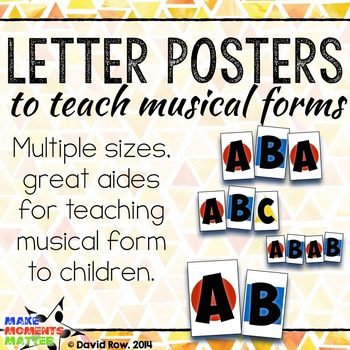 Whenever I teach a form using letters (ABA, AB, ABACA, etc) for the different sections I pull out these letters (see them in action in the pictures above). I made these to fit a half sheet of paper and attached velcro to the back. Then I added one long strip of velcro to the top of my whiteboard right under the top. Now, any time we identify form we put the letters up there as we go as a reminder and to help us identify. I don’t know why I haven’t ALWAYS done something like this. It’s such a great help! I use the half sheets when I identify with students and they’re the perfect size to print and post. I’ve also added full sheet versions so that you can make examples to hold up AND I’ve made little versions so that you can print out and hand out to student so that they can work on the form in their own space if they want. They’re FREE on my TPT store. Check them out HERE.
Whenever I teach a form using letters (ABA, AB, ABACA, etc) for the different sections I pull out these letters (see them in action in the pictures above). I made these to fit a half sheet of paper and attached velcro to the back. Then I added one long strip of velcro to the top of my whiteboard right under the top. Now, any time we identify form we put the letters up there as we go as a reminder and to help us identify. I don’t know why I haven’t ALWAYS done something like this. It’s such a great help! I use the half sheets when I identify with students and they’re the perfect size to print and post. I’ve also added full sheet versions so that you can make examples to hold up AND I’ve made little versions so that you can print out and hand out to student so that they can work on the form in their own space if they want. They’re FREE on my TPT store. Check them out HERE.  Here’s the lesson plan that I used and handed out at our local (Heart of America) Orff Chapter share session.
Here’s the lesson plan that I used and handed out at our local (Heart of America) Orff Chapter share session.
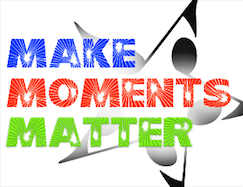


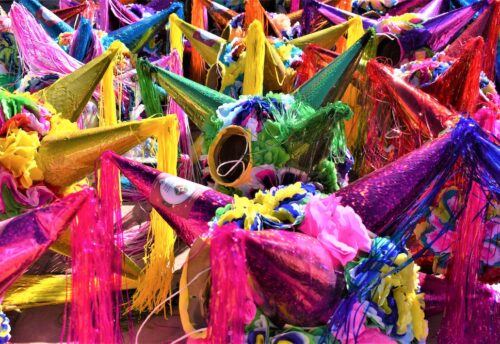
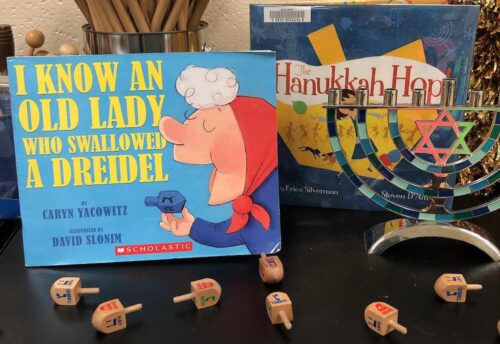
8 Comments